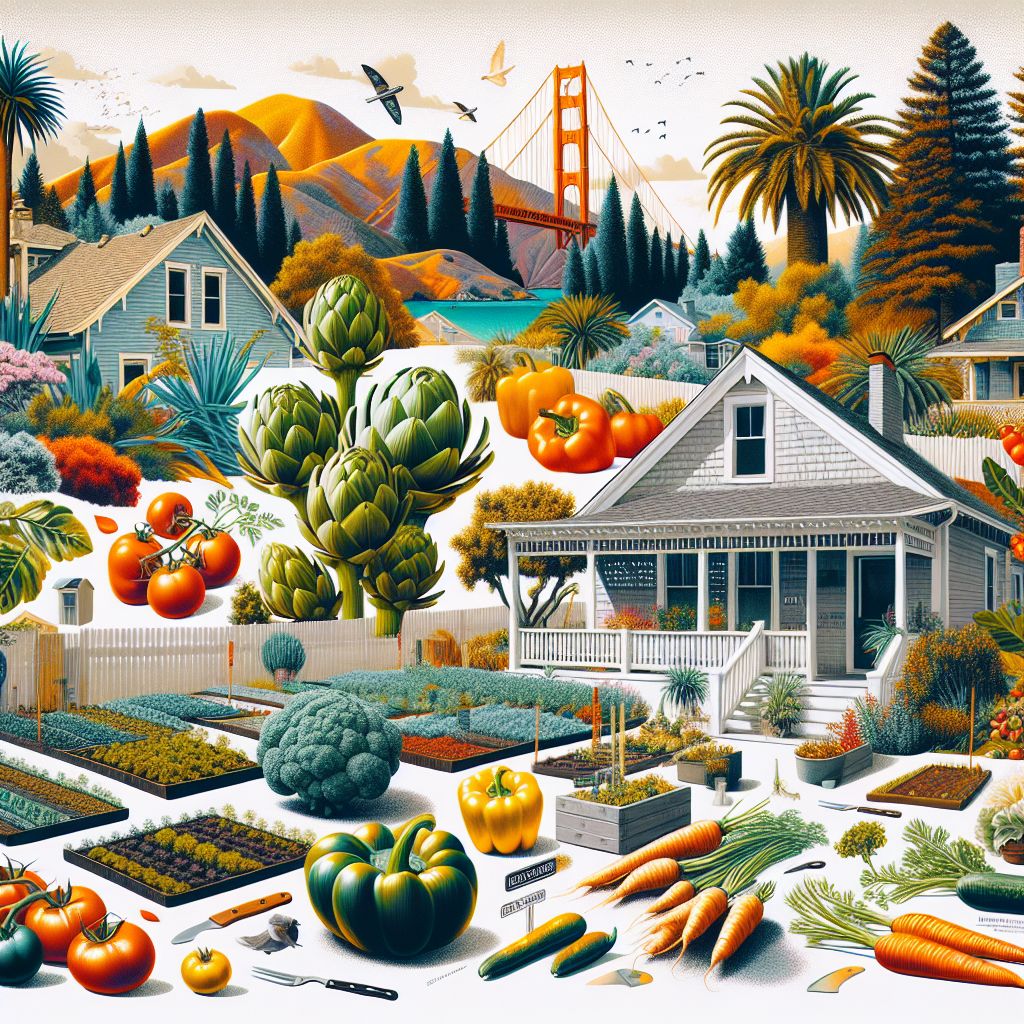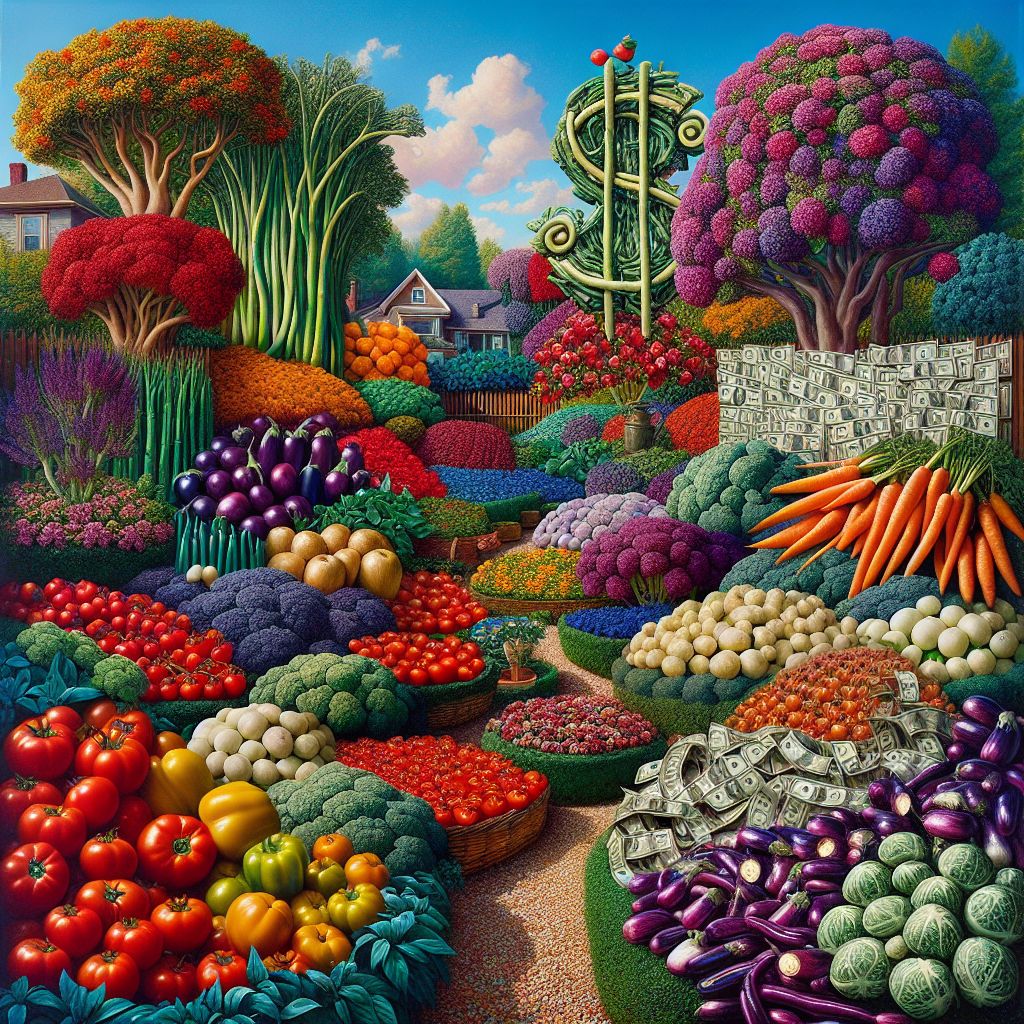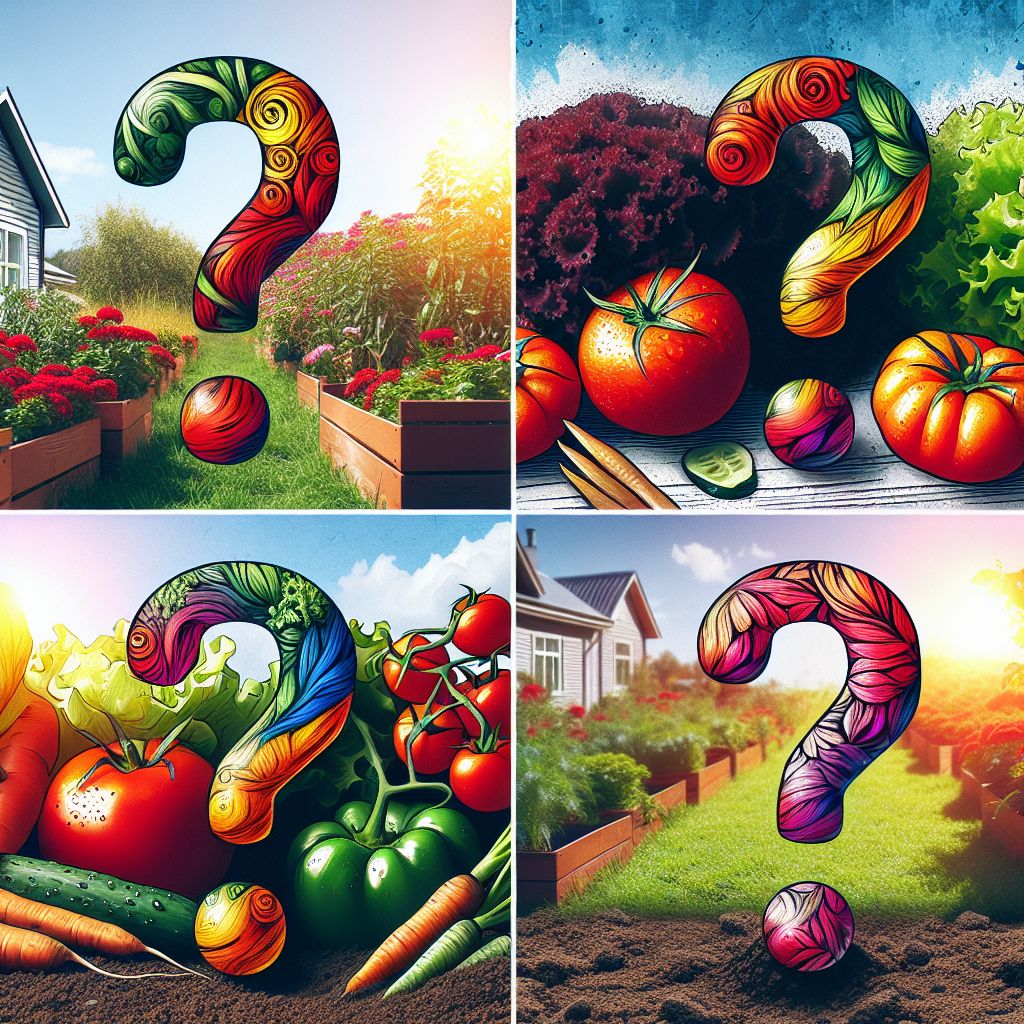
Key Takeaways
- In
, it’s legal to grow vegetables in your front yard for personal use thanks to the Neighborhood Food Act. - Front yard gardens can improve curb appeal, promote sustainability, and provide fresh produce.
- When starting a garden, choose vegetables that thrive in California’s climate and consider creative space-saving planting techniques.
- Setting up a garden involves initial costs for materials and plants, plus ongoing maintenance expenses.
- Regular garden care includes watering, managing sunlight, and maintaining soil quality to ensure a bountiful harvest.
Understanding California’s Front Yard Farming Law
Imagine stepping outside your front door to a vibrant patch of kale, tomatoes, and carrots, all ripe for the picking. This dream can be your reality in California, where the Neighborhood Food Act makes it legal to grow food in your front yard. The law, passed in 2014, was a game-changer, encouraging residents to cultivate their own fruits and vegetables, and thus, promoting self-sufficiency and healthy living.
Most importantly, this law prevents homeowners associations and local governments from banning these edible gardens. However, it’s wise to check with your local ordinances to ensure you’re in compliance with specific guidelines, like fence heights or garden sizes. Because even with state law in place, local regulations can have their nuances.
Therefore, let’s get down to the root of why these gardens are sprouting up across California.
Why Front Yard Vegetable Gardens Matter
Besides the obvious perk of having fresh produce at your fingertips, front yard vegetable gardens can transform communities. They serve as a platform for education, encouraging neighbors to discuss gardening techniques and swap veggies. Moreover, these gardens can reduce your carbon footprint by eliminating the need for transportation and packaging associated with store-bought produce.
But the benefits don’t stop at the environment or community engagement. Cultivating your own garden can also be incredibly rewarding, providing a sense of accomplishment and a physical connection to the food you eat. Plus, it’s an excellent activity for all ages to enjoy and learn from.
Starting Your Garden: A How-To Guide
Ready to turn your front yard into a flourishing food haven? First, you’ll need to plan. Evaluate your space, considering factors like sunlight, soil quality, and water access. Then, it’s time to pick your plants.
Choosing the Right Vegetables for Your Climate
California’s climate varies from north to south, so it’s crucial to select vegetables that will thrive in your specific region. Cool-season crops like lettuce and peas do well in the north, while warm-season plants like tomatoes and peppers love the south’s sunshine.
- Lettuce: Cool-season, easy to grow, and can be harvested within a month.
- Tomatoes: Prefer warm weather, need staking for support, and are ready in about two months.
- Carrots: Grow well in most climates, require deep, loose soil, and take about three months to mature.
- Zucchini: Love warm weather, need ample space, and can be harvested within two months.
- Peas: Thrive in cool weather, need a trellis to climb, and are ready in about one to two months.
Now that you’ve got your plants picked out, let’s dig into setting up your garden.
Step-by-Step Guide to Setting Up
Starting a garden isn’t as daunting as it might seem. Follow these steps, and you’ll be harvesting your own veggies in no time:
- Measure your space and plan your garden layout. Remember, some plants need more room than others.
- Choose raised beds or in-ground planting depending on your soil quality and personal preference.
- Prepare your soil by loosening it and adding compost to provide nutrients.
- Plant your seeds or seedlings, following the spacing recommendations on the seed packets or plant tags.
- Water your new plants gently but thoroughly to help them settle in.
With your garden planted, let’s explore how to give your veggies the best start.
Maximizing Space with Creative Planting Techniques
Even if your front yard is more petite than sprawling, you can still grow a variety of vegetables. Vertical gardening, for instance, is a fantastic way to grow upwards instead of outwards. Trellises, hanging baskets, and even repurposed furniture can be excellent homes for climbing plants like cucumbers and beans.
Another tip is to use companion planting, which means placing plants together that benefit each other. For example, planting basil near tomatoes can help repel pests and enhance the flavor of your tomatoes.
With your garden now in place, let’s talk about what it takes to keep it thriving. For some eco-friendly yard designs and maintenance tips, check out this guide on drought-resistant landscaping.

The Care and Keeping of Your Front Garden
Gardening is more than just planting seeds and watching them grow; it’s about nurturing and tending to your plants consistently. A thriving garden requires attention to detail and a little bit of elbow grease. But don’t worry, the rewards are well worth the effort!
Let’s walk through the essentials of garden maintenance, so you can ensure your veggies get the love they need to flourish.
Regular Maintenance Routines
Consistency is key when it comes to garden maintenance. Set aside time each week to check on your plants, pull weeds, and monitor for pests. Keep an eye out for any signs of disease or stress in your plants, such as discolored leaves or stunted growth. Addressing these issues early can mean the difference between a bountiful harvest and a garden flop.
Watering Your Plants Sustainably
Water is life, especially for your garden. But it’s important to use it wisely. Water in the early morning or late afternoon to reduce evaporation, and aim the water at the base of the plants to minimize waste. If possible, set up a rain barrel to collect water for your garden, which is not only eco-friendly but can also be better for your plants as it’s free from the chemicals found in tap water.
Managing Sunlight and Shade
Vegetables love the sun, but too much can be just as harmful as too little. Observe how the sunlight moves across your yard throughout the day and position your plants accordingly. If you live in a particularly hot area, consider using shade cloth during the peak sun hours to protect your plants from scorching.
The Importance of Soil Quality
Good soil is the foundation of a good garden. Your plants rely on the soil for nutrients, support, and aeration. Enhance your soil by adding organic matter like compost or well-rotted manure. Not only will this feed your plants, but it will also improve soil structure and water retention.
Harvesting: When and How to Pick Your Veggies
Harvesting at the right time is crucial for taste and nutrition. Most vegetables are best picked in the morning when their sugar content is highest. Gently twist or cut the produce from the plant, being careful not to damage the plant itself. Regular harvesting often encourages more production, so don’t be shy—pick those veggies!
The Long-Term Benefits of a Front Yard Farm
Your front yard garden isn’t just a one-season wonder; it’s an investment in your future. Over time, you’ll see a multitude of benefits that extend beyond the dinner plate.
Let’s delve into the lasting impacts of your green-thumb efforts.
Contributing to Eco-Friendliness and Sustainability
By growing your own food, you’re reducing the demand for commercially farmed produce, which often involves pesticides and long-distance transportation. Your front yard farm contributes to a greener, more sustainable world, one delicious vegetable at a time.
Enhancing Your Home’s Curb Appeal
A well-maintained vegetable garden can be a beautiful addition to your front yard, attracting pollinators and beneficial insects. Integrate flowers and herbs for a splash of color and fragrance, creating a space that’s pleasing to both the eye and the palate.
Savoring the Taste of Home-Grown Success
There’s nothing quite like the taste of vegetables you’ve grown yourself. They’re fresher, more flavorful, and you can take pride in knowing they came from your own hard work. Plus, sharing your harvest with friends and neighbors is a joy in itself.
Compliance and Considerations: Staying Within Legal Guidelines
While California law is on your side when it comes to growing food in your front yard, it’s still important to be a good neighbor and a responsible gardener. This means understanding the rules and regulations that apply to your specific situation.
Navigating Local Ordinances and HOA Rules
Even with state law permitting front yard gardens, local ordinances and homeowners association (HOA) rules can have additional requirements. It’s essential to familiarize yourself with these before you start digging. Look for restrictions on garden size, plant height, or types of structures allowed. Staying informed can help you avoid any potential conflicts or fines.
Understanding Your Rights Under California Law
The Neighborhood Food Act protects your right to grow food for personal use, but it’s always a good idea to double-check the details. If you’re ever in doubt, reach out to a local gardening group or legal advisor for clarification. Knowing your rights ensures that you can confidently cultivate your garden without worry.
Planting Your Perfect Vegetable Garden In California
| Plant | Description | Estimated Cost |
|---|---|---|
| Tomatoes | Versatile fruit that can be grown in containers or gardens. Require full sun and well-draining soil. 1 | $2-$5 per plant |
| Leafy Greens (e.g. lettuce, kale, spinach) | Nutrient-dense and easy to grow. Can be harvested continuously. Prefer cooler temperatures. 2 | $1-$3 per seed packet |
| Herbs (e.g. basil, cilantro, parsley) | Add flavor to dishes. Many varieties suitable for containers or gardens. Require well-draining soil. 3 | $2-$5 per plant or seed packet |
| Peppers | Range from mild to hot varieties. Thrive in warm weather and full sun. Can be grown in containers. 4 | $2-$5 per plant |
| Radishes | Fast-growing root vegetable. Can be grown in containers or gardens. Prefer cooler temperatures. 5 | $1-$3 per seed pa |
References:
1 https://www.latimes.com/business/realestate/la-fi-associations-20141116-story.html
2 https://patch.com/california/shermanoaks/is-that-front-yard-veggie-garden-legal
3 https://insteading.com/blog/california-passes-neighborhood-food-act/
4 https://sustainablecitycode.org/brief/front-yard-gardening-in-residential-districts/
5 https://sustainablecitycode.org/brief/edible-front-yard-gardening-in-residential-districts/

FAQs: Front Yard Vegetable Gardening in California
Can I Plant Any Type of Vegetable in My Front Yard?
While you may be considering planting vegetables in your front yard, it’s important to understand the specific guidelines and native plants suitable for your region to ensure a successful and low-maintenance garden.
Yes, you can plant any vegetable in your front yard as long as it complies with local ordinances and doesn’t create a nuisance. However, consider the climate and how much sun and space each plant will need.
What Happens If I Don’t Follow Local Gardening Regulations?
If you don’t follow local regulations, you could be subject to fines or be asked to remove non-compliant elements of your garden. Always check with your city or HOA before planting.
How Can I Make My Vegetable Garden Water-Efficient?
Making your vegetable garden water-efficient is crucial, especially in regions where water conservation is essential. One way to achieve this is by incorporating
To conserve water, use drip irrigation or soaker hoses, mulch your plants to retain moisture, and choose drought-resistant varieties. Collecting rainwater can also be a smart move.
Are There Any Grants or Programs to Help Start My Garden?
There may be local grants or community programs available to help start your garden. Research online or contact your local extension office for information on resources in your area.




Leave a Reply